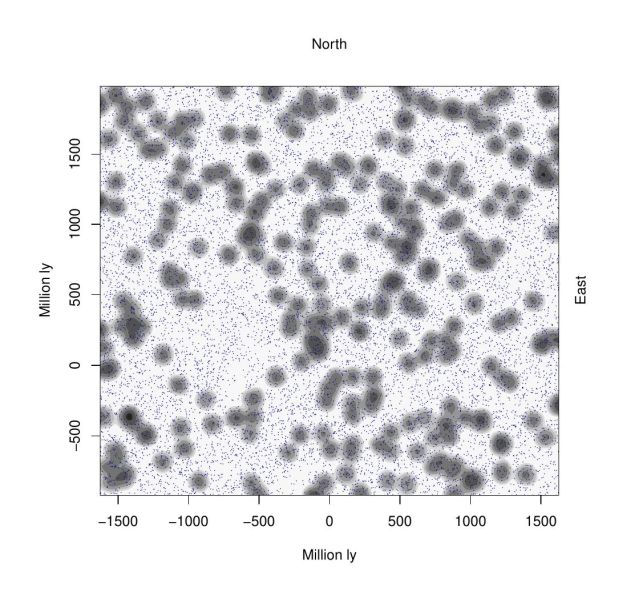A colossal structure in the distant universe challenges our understanding of how the universe evolved.
In the light that has traveled 6.9 billion years to reach us, astronomers have found a gigantic, near-perfect ring of galaxies about 1.3 billion light-years in diameter. It does not correspond to any known structure or formation mechanism.
The Great Ring, as the structure has been called, could mean that we need to adjust the standard model of cosmology.
The discovery, led by astronomer Alexia Lopez of the University of Central Lancashire, was presented at the 243rd meeting of the American Astronomical Society in January and is reported in a preprint article available on arXiv.

It is the second giant structure that Lopez and her colleagues have discovered. The first, called the Giant Arc, is actually in the same part of the sky, the same distance away. When the discovery of the arc was announced in 2021, astronomers were amazed. The Great Ring only deepens the mystery.
“Neither of these two ultra-large structures is easily explained in our current understanding of the universe,” Lopez said in January. “And their ultra-large sizes, distinctive shapes and cosmological proximity must surely tell us something important – but what exactly?”
The most direct link seems to involve something called Baryon Acoustic Oscillation (BAO). These are giant, circular arrangements of galaxies found throughout space. They are actually spheres, the fossils of acoustic waves that propagated through the early universe and then froze when space became so diffuse that acoustic waves could no longer travel.
The Grand Ring is not a BAO. BAOs are all of a fixed size of about 1 billion light-years in diameter. And a close inspection of the Great Ring reveals that it looks more like a corkscrew shape, aligned to resemble a ring.

Which leaves the very unanswered question: what the heck is it? And what does this mean for the cosmological principle, which states that every piece of space should look approximately the same in all directions as all other places in space?
“We expect matter to be evenly distributed throughout space when we view the universe on a large scale, so there should be no noticeable irregularities above a certain size,” Lopez explains.
“Cosmologists calculate that the current theoretical maximum size of structures is 1.2 billion light-years, yet both structures are much larger: the Giant Arc is almost three times larger and the circumference of the Great Ring is comparable to the length of the Giant Arc.”
But size is only one of the problems. The other is what it means for cosmology, the study of the evolution of the universe. The current model currently best fits what we observe, but there are some features that are difficult to explain within its framework.
Other models have been put forward to address these characteristics. Under one such model, Roger Penrose’s conformal cyclic cosmology, in which the universe undergoes endless Big Bang expansion cycles, ring structures are expected – although it is worth noting that conformal cyclic cosmology itself has significant problems.
frameborder=”0″ allow=”accelerometer; autoplay; clipboard writing; encrypted media; gyroscope; photo within photo; web-share” referrerpolicy=”strict-origin-when-cross-origin” allowfullscreen>
Another possibility is that the structures are some kind of topological defect in the fabric of space-time, known as cosmic strings. This is thought to resemble proton-wide ripples that formed in the early universe as spacetime stretched and then froze in place. We haven’t found much physical evidence for cosmic strings, but the theoretical evidence is quite promising.
At this point, no one knows for sure what the Great Ring and the Giant Arch mean. They could just be coincidental arrangements of galaxies spinning across the sky, although the chances of that seem pretty slim.
The best hope would be to find more such arrangements of galaxies, scattered across the universe, hidden in plain sight.
“Based on current cosmological theories, we didn’t think structures on this scale were possible,” Lopez said. “We might expect one extraordinarily large structure in our entire observable universe. Yet the Great Ring and the Giant Arc are two enormous structures and even cosmological neighbors, which is extremely fascinating.”
The research was presented at the 243rd meeting of the American Astronomical Society and is reported in a pre-print paper on arXiv.org.
An earlier version of this article appeared in January 2024.